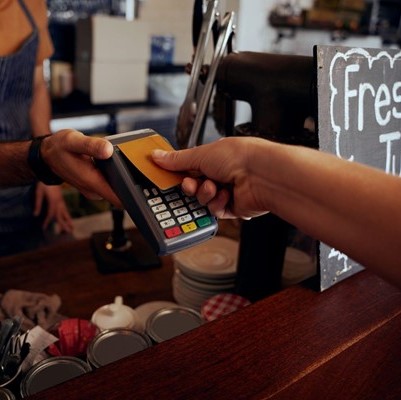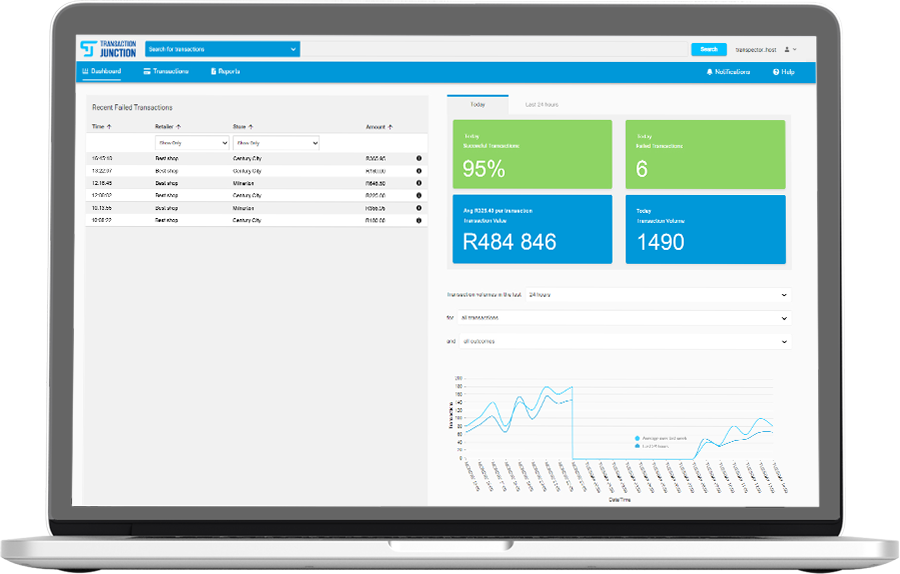Consumers expect the luxury of a fast and simple payment experience when paying for goods and services. For those on the other side of the checkout process, managing payments in a secure and compliant manner can become quite a complicated process. This is why Transaction Junction takes care of all your transactional requirements and removes the complexity for our customers so that they can focus on business.
Non-Integrated Payment
In a non-integrated payment system, a merchant’s card terminal is not synced to their POS (point of sale). Cashiers will have to manually input the price of a customer’s order into the card terminal after scanning their items. The cashier then asks the customer to tap or swipe their card to complete the transaction.
Payments will then make their way to processing straight from the card terminal. The terminal will display whether or not the payment was successful and will produce a slip reflecting this information.
To ensure that there are records of a business’s transactions on a non-integrated payment system, cashiers will have to manually input these transactions into their POS software after concluding a sale. Once the customer’s card has been charged, cashiers must then log the type of payment used as well as manually log the amount of money charged to their card.
These payment systems are commonly found in smaller South African businesses and are not the method of choice for businesses who demand a more automated system.
In a non-integrated eCommerce store, the shopper will add items to the cart (as usual), then proceed to the checkout, where he/she will be prompted to enter personal details (name, delivery details etc.) on the checkout page on the online shop. After this, the shopper will be redirected to a third-party payment page to enter their payment information. After the payment has been approved, the shopper will be re-directed back to the online shop, where the order will be confirmed.
The benefits of a non-integrated payment system include the fact that it is initially a relatively more affordable option, and for businesses that are just starting out or that have more restrictive budgets, this payment system may seem more appealing. However, the risks and costs associated from this system far outweigh any perceived cost savings or benefits.

Non-integrated payment systems entail a slower checkout process for both in-store purchases as well as online. Brick-and-mortar retailers might also struggle with piling queues in their stores from the slower checkout. For online stores, having to pay for orders through a third-party landing page may discourage customers from completing their orders.
Additionally, non-integrated payment systems leave businesses vulnerable to human error and fraud. Failure to input the correct amount of money during checkout can lead to the cashier under or over-charging the customer, leading to financial losses and a poor customer experience. Lastly, non-integrated payment systems do not automatically collect transactional data. Merchants have to log this information manually since their card terminals do not communicate with their POS.
Integrated Payment
With an integrated payment system, the card terminal will communicate directly with the POS and vice-versa, effectively circumventing the need for cashiers to input transaction data manually. This means that after scanning all the products, the amount the customer owes is automatically sent from the POS system to the card payment terminal. Once the transaction is complete, the transaction information is automatically synchronised with the POS.
In an integrated online payment system, the process is simple. The consumer adds the goods to their cart, then proceeds to the checkout. They type in their personal information, select their payment method and input their payment details directly on the eCommerce site. No redirects!

Benefits Beyond Payments
With an integrated payment system in place, a merchant can view their business’s transactions as they happen. This is because payments made by customers are logged in real-time. For this reason, merchants using integrated payment find it much easier to manage the accounting side of their businesses. Information is more accurate and can be accessed instantly. This data can then be analysed for business insights. Merchants can enjoy a seamless flow of transactions and transaction data, saving time for both themselves and their customers.
Businesses using integrated payment have an easier job of undertaking reconciliation at the end of the workday. No information has to be inputted manually since the payment totals and their respective card types have already been automatically logged in the POS. At the end of the day, our leading reconciliation platform automatically calculates and displays transaction discrepancies between the amount that should be in the merchants account versus what is actually there, removing the need for a manual matching process – saving merchants valuable time and energy!
We provide Transpector as a standard to all clients using our services for integrated payment in South Africa. The purpose of Transpector is to offer an easy and uncomplicated means through which our clients can manage their transactional information and accounting requirements. Inclusive of an interface involving detailed charts and tables, this programme gives our merchants a comprehensive view of their businesses’ transaction data. Using Transpector, merchants can also filter through their transactional information to find exactly what they are looking for.
Supporting over 2 billion transactions annually with 100% availability since 2013, Transaction Junction is committed to bettering the experience of our clients and their customers through innovative payment solutions.

